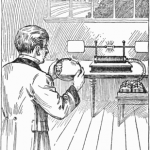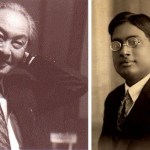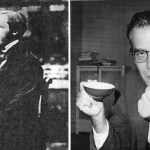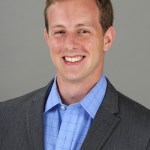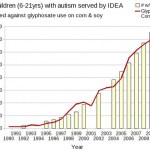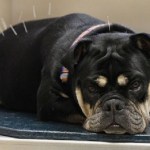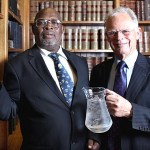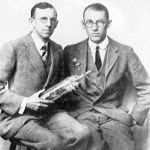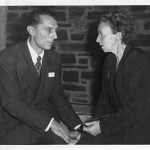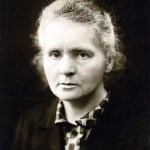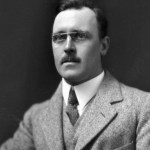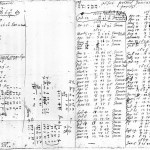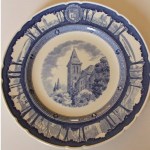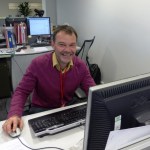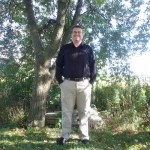Physical Sciences
Rhett Allain has a list of 5 Things Every Human Should Know About Light, to tie in with the International Year of Light, and it's a good list with lots of .gifs. Of course, there are some gaps, so let me offer some additional things that everyone ought to know about light:
-- Light Is a Particle
Rhett and I have a long-running argument about the use of photons in introductory physics; he's against them for reasons that make no sense to me. To my mind, it is unquestionably true that light has particle-like properties (and here's a follow-up with some math), and that's a thing that everybody…
(When I launched the Advent Calendar of Science Stories series back in December, I had a few things in mind, but wasn't sure I'd get through 24 days. In the end, I had more than enough material, and in fact didn't end up using a few of my original ideas. So I'll do a few additional posts, on an occasional basis, to use up a bit more of the leftover bits from Eureka: Discovering Your Inner Scientist...)
One of the things I was reacting against in writing Eureka is the popular idea of scientists as a sort of unworldly elite, off doing their ivory-tower idealized thing without worrying about…
The Great DeflateGate Controversy
This year's Super Bowl will be, as of this writing, tomorrow, late afternoon, between the New England Patriots and the Seattle Seahawks. Both teams have a 14-4 record for the season, so it should be a good game. Also, the game will be held in a stadium located in an arid and warm region of the country, in a stadium with a covered roof. So, there is no chance of a cloudy with a chance of deflated-balls scenario.
You have probably heard that an accusation has been made against the New England Patriots regarding their balls. It has been claimed that they…
Shamelessly stolen from ATTP's “More than half” is the same as “> 50%”!, but I think this captures brilliantly a typical argument with the "skeptics":
TPP has a link to the interesting story of Alfred Russel Wallace's bet with the flat-earthers that the Earth was, in fact, not flat. Somehow, that seems relevant.
While I'm copying, I may as well point you at It’s the Trend, Stupid as an antidote, if needed, to the misc denialists.
Moyhu also has a nice pic, which I've inlined below, and a nice discussion of the different sorts of uncertainties.
And while on misc, via Paul I find Brown…
(When I launched the Advent Calendar of Science Stories series back in December, I had a few things in mind, but wasn't sure I'd get through 24 days. In the end, I had more than enough material, and in fact didn't end up using a few of my original ideas. So I'll do a few additional posts, on an occasional basis, to use up a bit more of the leftover bits from Eureka: Discovering Your Inner Scientist...)
Every physicist with the tiniest bit of a public profile gets letters from people with a pet theory to promote. These days, email and social media make it incredibly easy to flood the inbox of…
(When I launched the Advent Calendar of Science Stories series back in December, I had a few things in mind, but wasn't sure I'd get through 24 days. In the end, I had more than enough material, and in fact didn't end up using a few of my original ideas. So I'll do a few additional posts, on an occasional basis, to use up a bit more of the leftover bits from Eureka: Discovering Your Inner Scientist...)
One of my very favorite stories about a famous physicist concerns a young man of about 19, arriving at Cambridge from the University of Edinburgh. While being introduced around the college, it…
I've decided to do a new round of profiles in the Project for Non-Academic Science (acronym deliberately chosen to coincide with a journal), as a way of getting a little more information out there to students studying in STEM fields who will likely end up with jobs off the "standard" academic science track.
The twelfth profile of this round (after a short hiatus for relentless book promotion) features a distinguished Union Physics alumnus, now a business analyst in New Jersey.
1) What is your non-academic job? I work at the Princeton, NJ office of ZS Associates, a company that describes…
That paper that proposed that most cancers were due to bad luck, that is, that they were a consequence of biological factors that could not be controlled, has been surprisingly controversial. I thought it was a fairly unsurprising paper that confirmed what we already suspected, but wow, the furious pushback has been something to behold.
Today, though, a couple of MDs have responded to the paper and reinforce what I said.
Steven Novella thinks the general logic is sound.
This is an interesting study and it will be interesting to look at replications and other methods, if they are available, of…
She's baa-aack.
Remember Stephanie Seneff? When last Orac discussed her, she had been caught dumpster diving into the VAERS database in order to torture the data to make it confess a "link" between aluminum adjuvants in vaccines and acetaminophen and—you guessed it!—autism. It was a bad paper in a bad journal known as Entropy that I deconstructed in detail around two years ago. As I said at the time, I hadn't seen a "review" article that long and that badly done since the even more horrible article by Helen Ratajczak entitled Theoretical aspects of autism: Causes–A review (which, not…
Ever since moving back to the Detroit area nearly seven years ago, one thing I've noticed is a propensity for our local news outlets to go full pseudoscience from time to time. I'm not sure why, other than perhaps that it attracts eyeballs to the screen, but, in reality, most of these plunges into pseudoscience and quackery are so poorly done that I find it hard to believe that even believers find them interesting. For example, back in 2008, I discussed a particularly dumb story aired by our local NBC affiliate WDIV entitled Orbs: Myth or Real?, which, not having started my new job yet, I…
Another weekend day, another story I'm going to outsource a bit. In this case, to the original scientist, who at the time of his discovery was a 13-year-old schoolboy in Tanzania:
In 1963, when I was in form 3 in Magamba Secondary School, Tanzania, I used to make ice-cream. The boys at the school do this by boiling milk, mixing it with sugar and putting it into the freezing chamber in the refrigerator, after it has first cooled nearly to room temperature. A lot of boys make it and there is a rush to get space in the refrigerator.
One day after buying milk from the local women, I started…
We're going to depart from the chronological ordering again, because it's the weekend and I have to do a bunch of stuff with the kids. Which means I'm in search of a story I can outsource...
In this case, I'm outsourcing to myself-- this is a genuine out-take from Eureka: Discovering Your Inner Scientist, specifically Chapter 2, which tells two stories from the career of Luis Alvarez, who I've talked about before in the context of his experiment to x-ray one of the pyramids at Giza, and the time I wrote him a letter when I was nine about his theory that an asteroid impact killed the dinosaurs…
As I endlessly repeat, I'm an experimentalist by training an inclination, so I especially appreciate stories about experimental science. There's something particularly wonderful about the moment when an experiment clicks together, usually after weeks or months of hard, frustrating work, when things just keep breaking.
Of course, sometimes, breaking stuff can be a Good Thing.
Possibly my favorite story from the development of quantum physics involves just such an occasion, around 1924, when Clinton Davisson and Lester Germer at Bell Labs were trying to characterize a nickel surface by bouncing…
The winter solstice holidays are a time for family and togetherness, so building off yesterday's post about the great Marie Skłodowska Curie, we'll stay together with her family. Specifically her daughter Irène Joliot-Curie and her husband Frédéric. The Joliot-Curies are possible answers to a number of Nobel Prize trivia questions-- only mother and daughter to win, one of a handful of married couples, etc.-- but the scientific story about them that I find most fascinating is that their Nobel was for the third thing they did that could've earned them the prize, after they just missed out on…
There's no way I could possibly go through a long history-of-science blog series without mentioning the great Marie Skłodowska Curie, one of the very few people in history to win not one but two Nobel Prizes for her scientific work-- if nothing else, Polish pride would demand it. She made a monumental contribution to physics through her work on radioactivity (and through being nearly impossible to kill-- while her work on isolating radium made her ill for many years, she outlived an amazing number of her assistants...), and there are a lot of great stories about her.
This series is partly…
"You wanted to see me, Herr Professor?"
"Hans! Yes, come in, come in. Just going over the account books. Frightful amount of money going out of this place."
"Well, radium is expensive..."
"Ha! Oh, and speaking of which-- here's one of the sources. Absent-mindedly dropped the fool thing in my pocket last night when I locked up. Terrible habit, I really must work on that. Had a drawer full of the things in Montreal..."
"Thank you. And you wanted to see me about...?"
"Oh, yes. We have a new student, Hans, and I'd like you to put him to work on the gold foil project."
"Shouldn't he have his own…
Speaking of the timing of astronomical phenomena, as we were yesterday, the timing of celestial bodies was the key to the first demonstration of one of the pillars of modern physics, the fact that light travels at a finite speed. This actually pre-dates yesterday's longitude discoveries, which I always forget, because it seems like it should've been a later development.
The first really convincing demonstration that light doesn't cover arbitrary distances instantaneously dates from 1676, and was the work of the Danish astronomer Ole Rømer. Under the direction of Giovanni Cassini at the Paris…
I've been trying to keep to a roughly chronological ordering of these stories, but this slow-motion snow storm that was waiting to greet us on our return from Florida made the schools open on a two-hour delay today, which eats the time I usually use for blogging and books stuff. So I'm going to jump forward three hundred years, to a story that I can outsource.
To set the stage, in the aftermath of WWII, Richard Feynman took up a faculty job at Cornell, but between working on the Manhattan Project and the death of his beloved wife, he found that he was completely burned out, and not able to do…
I've decided to do a new round of profiles in the Project for Non-Academic Science (acronym deliberately chosen to coincide with a journal), as a way of getting a little more information out there to students studying in STEM fields who will likely end up with jobs off the "standard" academic science track.
The tenth profile of this round features the editor of PhysicsWorld.com, which is probably the best physics magazine web site out there.
1) What is your non-academic job? I am editor of physicsworld.com, which is a website aimed at working physicists and people with a background in physics…
I've decided to do a new round of profiles in the Project for Non-Academic Science (acronym deliberately chosen to coincide with a journal), as a way of getting a little more information out there to students studying in STEM fields who will likely end up with jobs off the "standard" academic science track.
Ninth in this round is a physics major turned semiconductor engineer.
1) What is your non-academic job? I am a Plasma Etch Process Engineer at Avago Technologies, which is a semiconductor/MEMS company that produces Wireless semiconductor devices.
2) What is your science background? I…
